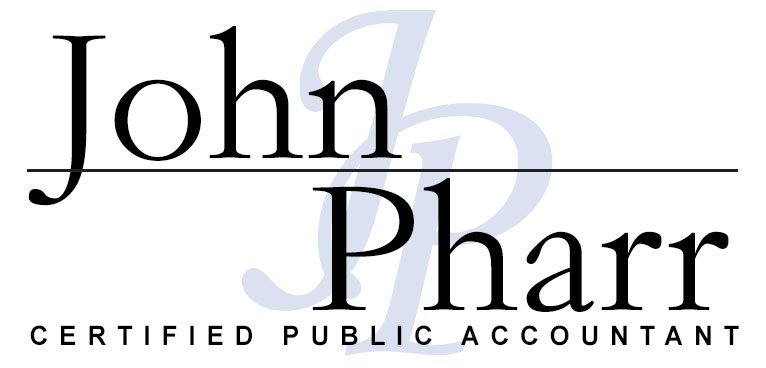Important Tax Changes for Individuals & Businesses
Every year, there will be changes to the tax law and this year is no different. From the standard deductions to health savings accounts and tax rate schedules, here is a checklist of a few of the tax changes to help you plan the year ahead.
INDIVIDUALS
In 2021, a number of tax provisions are affected by inflation adjustments, including Health Savings Accounts, retirement contribution limits, and the foreign earned income exclusion. The tax structure, which ranges from 10 to 37 percent, remains similar to 2020; however, the tax-brackets increase for each filing status and the standard deductions also rise.
Standard Deduction
In 2021, the standard deduction increases to $12,550 for individuals (up from $12,400 in 2020) and to $25,100 for married couples (up from $24,800 in 2020).
Health Savings Accounts (HSAs)
Contributions to a Health Savings Account (HSA) are used to pay current or future medical expenses of the account owner, his or her spouse, and any qualified dependent.
A qualified individual must be covered by a High Deductible Health Plan and not be covered by other health insurance with the exception of insurance for accidents, disability, dental care, vision care, or long-term care.
For calendar year 2021, a qualifying HDHP must have a deductible of at least $1,400 for self-only coverage or $2,800 for family coverage.
AGI Limit for Deductible Medical Expenses
In 2021, the deduction threshold for deductible medical expenses is 7.5 percent of adjusted gross income (AGI), made permanent by the Consolidated Appropriations Act, 2021.
Eligible Long-Term Care Premiums
Premiums for long-term care are treated the same as health care premiums and are deductible on your taxes subject to certain limitations.
Foreign Earned Income Exclusion
For 2021, the foreign earned income exclusion amount is $108,700 up from $107,600 in 2020.
Long-Term Capital Gains and Dividends
In 2021 tax rates on capital gains and dividends remain the same as 2020 rates (0%, 15%, and a top rate of 20%); however, threshold amounts have increased: the maximum zero percent rate amounts are $40,400 for individuals and $80,800 for married filing jointly. For an individual taxpayer whose income is at or above $445,850 ($501,600 married filing jointly), the rate for both capital gains and dividends is capped at 20 percent. All other taxpayers fall into the 15 percent rate amount (i.e., above $40,400 and below $445,850 for single filers).
INDIVIDUALS – TAX CREDITS
Earned Income Tax Credit
For tax year 2021, the maximum Earned Income Tax Credit (EITC) for low and moderate-income workers and working families rises to $6,728 up from $6,660 in 2020. The credit varies by family size, filing status, and other factors, with the maximum credit going to joint filers with three or more qualifying children.
Child Tax Credit
For tax years 2020 through 2025, the child tax credit is $2,000 per child. The refundable portion of the credit is $1,400 so that even if taxpayers do not owe any tax, they can still claim the credit. A $500 nonrefundable credit is also available for dependents who do not qualify for the Child Tax Credit (e.g., dependents age 17 and older).
Child and Dependent Care Tax Credit
The Child and Dependent Care Tax Credit also remained under tax reform. If you pay someone to take care of your dependent (defined as being under the age of 13 at the end of the tax year or incapable of self-care) to work or look for work, you may qualify for a credit of up to $1,050 or 35 percent of $3,000 of eligible expenses in 2021. For two or more qualifying dependents, you can claim up to 35 percent of $6,000 (or $2,100) of eligible expenses. For higher-income earners, the credit percentage is reduced, but not below 20 percent, regardless of the amount of adjusted gross income. This tax credit is nonrefundable.
INDIVIDUALS – EDUCATION
Interest on Educational Loans
In 2021, the maximum deduction for interest paid on student loans is $2,500. The deduction begins to be phased out for higher-income taxpayers with modified adjusted gross income of more than $70,000 ($140,000 for joint filers) and is completely eliminated for taxpayers with modified adjusted gross income of $85,000 ($170,000 joint filers).
INDIVIDUALS – RETIREMENT
Contribution Limits
The elective deferral (contribution) limit for employees who participate in 401(k), 403(b), most 457 plans, and the federal government’s Thrift Savings Plan remains at $19,500. Contribution limits for SIMPLE plans also remain at $13,500. The maximum compensation used to determine contributions increases to $290,000 (up from $285,000 in 2020).
Income Phase-out Ranges
The deduction for taxpayers making contributions to a traditional IRA is phased out for singles and heads of household who are covered by an employer-sponsored retirement plan and have modified AGI between $66,000 and $76,000.
For married couples filing jointly, in which the spouse who makes the IRA contribution is covered by an employer-sponsored retirement plan, the phase-out range increases to $105,000 to $125,000. For an IRA contributor who is not covered by an employer-sponsored retirement plan and is married to someone who is covered, the deduction is phased out if the couple’s modified AGI is between $198,000 and $208,000.
The modified AGI phase-out range for taxpayers making contributions to a Roth IRA is $125,000 to $140,000 for singles and heads of household, up from $124,000 to $13999,000. For married couples filing jointly, the income phase-out range is $198,000 to $208,000, up from $196,000 to $206,000. The phase-out range for a married individual filing a separate return who makes contributions to a Roth IRA is not subject to an annual cost-of-living adjustment and remains $0 to $10,000.
BUSINESSES
Standard Mileage Rates
In 2021, the rate for business miles driven is 56 cents per mile, down one half of a cent from the rate for 2020.
Section 179 Expensing
In 2021, the Section 179 expense deduction increases to a maximum deduction of $1,050,000 of the first $2,620,000 of qualifying equipment placed in service during the current tax year. This amount is indexed to inflation for tax years after 2018. The deduction was enhanced under the TCJA to include improvements to nonresidential qualified real property such as roofs, fire protection, and alarm systems and security systems, and heating, ventilation, and air-conditioning systems. Also, of note is that costs associated with the purchase of any sport utility vehicle, treated as a Section 179 expense, cannot exceed $26,200.
Qualified Business Income Deduction
Eligible taxpayers are able to deduct up to 20 percent of certain business income from qualified domestic businesses, as well as certain dividends. To qualify for the deduction business income must not exceed a certain dollar amount. In 2021, these threshold amounts are $164,900 for single and head of household filers and $329,800 for married taxpayers filing joint returns.
Research & Development Tax Credit
Starting in 2018, businesses with less than $50 million in gross receipts can use this credit to offset alternative minimum tax. Certain start-up businesses that might not have any income tax liability will be able to offset payroll taxes with the credit as well.
Employee Health Insurance Expenses
For taxable years beginning in 2021, the dollar amount of average wages is $27,800 ($27,600 in 2020). This amount is used for limiting the small employer health insurance credit and for determining who is an eligible small employer for purposes of the credit.
Taxpayers who incur food and beverage expenses associated with operating a trade or business are able to deduct 100 percent (50 percent for tax years 2018-2020) of these expenses for tax years 2021 and 2022 (The Consolidated Appropriations Act, 2021) as long as the meal is provided by a restaurant.
While this checklist outlines important a few of the tax changes for 2021, additional changes in the tax law are likely to arise during the year ahead. Don’t hesitate to call if you have any questions or want to get a head start on tax planning for the year ahead.




